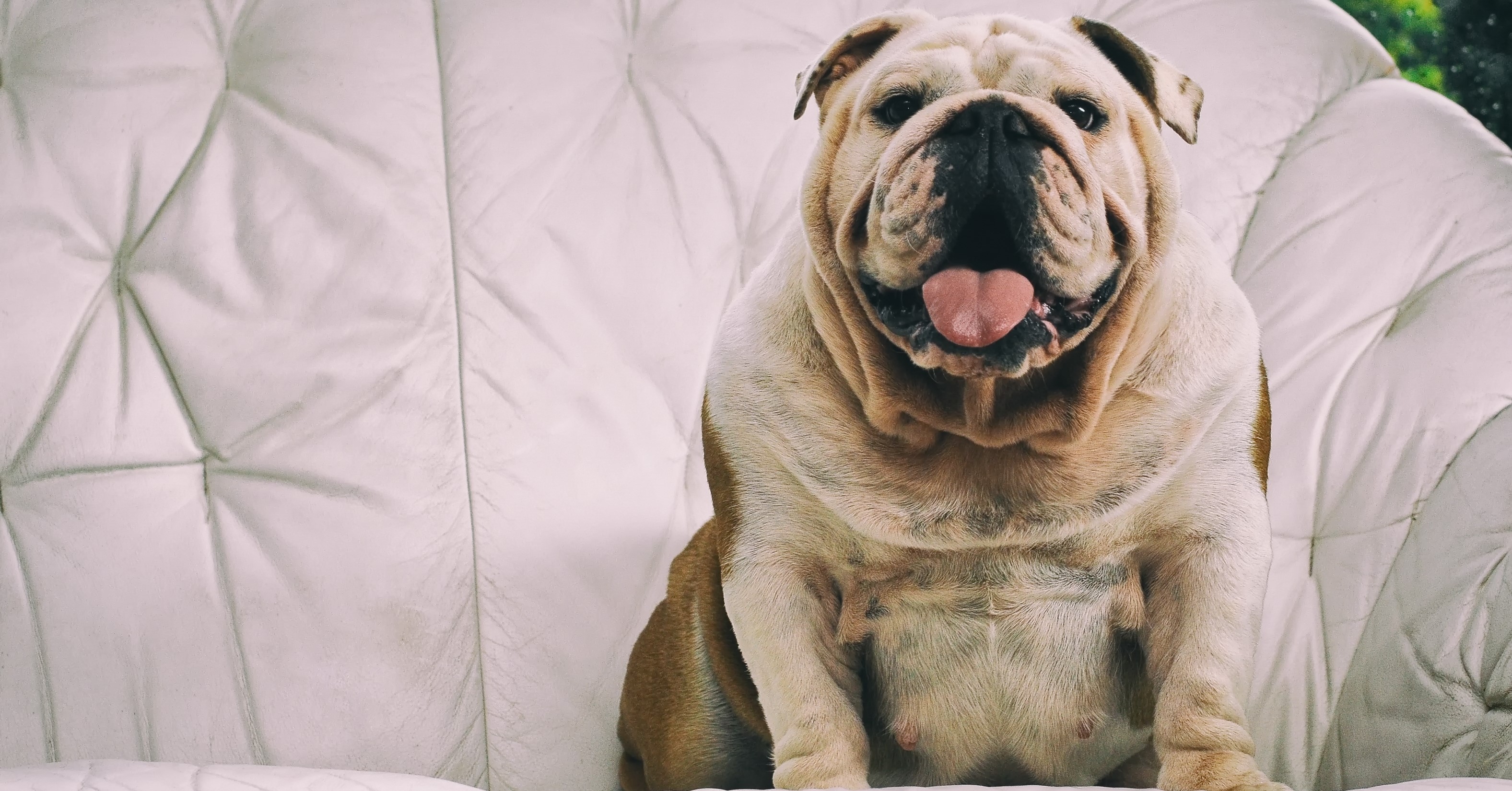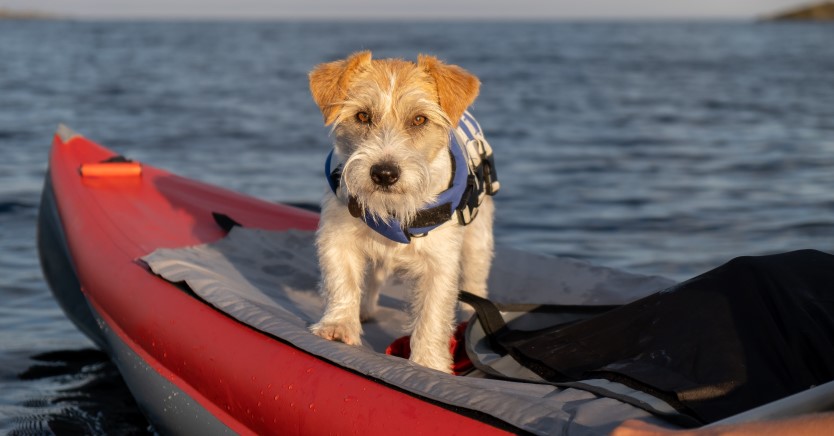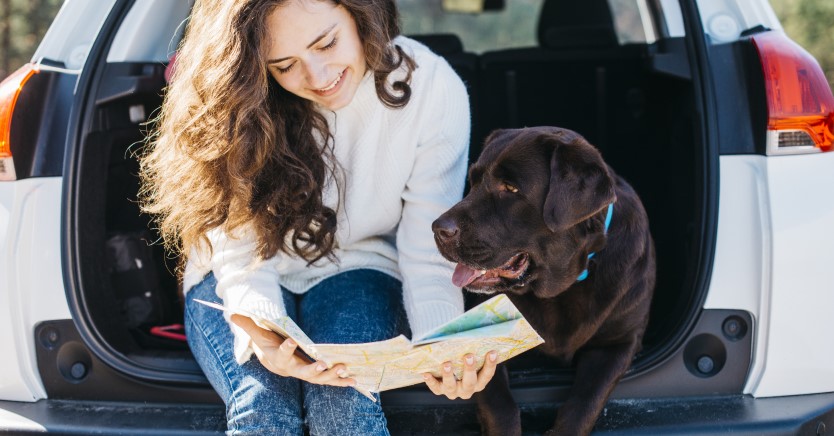How to Help Your Dog Lose Weight
You can help your dog lose unwanted weight with the aid of these handy, effective weight loss tips.

When you first adopted that tiny puppy, you knew that it would someday grow to a full sized adult. However, you may have been less prepared to see your dog grow outward as well as up. Like humans, dogs can become overweight or even dangerously obese if they eat too much, eat the wrong foods, and/or don't burn enough daily calories. Let's look at some strategies you can employ to help your beloved dog slim down.
How to Know When Your Dog Needs to Lose Weight
Does your dog actually need to lose weight, or is it just "big-boned" for its breed? The most accurate way to gauge your dog's weight is by scheduling a wellness exam with your veterinarian. Your vet can compare your dog’s current weight with the normal range for their breed.
Between wellness exams, you can use a few general rules of thumb to evaluate your dog's health for yourself -- starting by viewing your dog’s body from above. A healthy dog's midsection will have a bit of an hourglass shape, while an overweight or obese dog may appear more rounded or barrel-shaped with no clear waistline. When viewed from the side, a round belly that hangs downward also indicates excess weight.
Watch for other telltale signs that your dog packs too many pounds. These signs may include a waddling gait, heavy breathing, and poor exercise tolerance.
Practice Calorie Restriction for Weight Loss
Once the veterinarian tells you your dog's current weight (or you place the dog on your home scale to get the number yourself), you can figure out whether your dog consumes too many daily calories to maintain a healthy weight. Check your dog's weight using this online chart posted by WSAVA Global nutrition Committee. Note, for instance, that a typical 11-pound dog doesn't need more than 351 calories per day, while a massive 99-pounder can consume up to 1824 calories per day without necessarily getting fat.
Now that you know how many calories your dog should be getting, check the calorie listings on your pet food and dog treats to see whether you've been overfeeding it. If so, then it's time to start restricting your pet's portion sizes or the number of their daily meals.
Choose Quality Dog Food for a Leaner Pet
The quality of food your dog receives affects its weight just as much as the quantity. A diet heavy in fats and starches will promote weight gain faster than a diet featuring lean protein, healthy carbs, and plenty of fiber. A high-fiber, low-fat diet will help your dog lose weight without forcing it to feel hungry all the time.
The best dog foods for weight loss will provide your dog with a full range of micronutrients. First and foremost, you should choose dog food rich in all the essential vitamins and minerals a dog needs. Make sure your dog also gets plenty of l-carnitine, an amino acid that assists in fat burning, and antioxidants to help control the inflammation often associated with obesity.
Exercise Your Dog to Burn Fuel and Fat
A successful canine weight loss program usually involves two key factors: consuming fewer calories, and burning more of the calories consumed. In addition to putting your dog on a diet, you also want to increase its activity level. However, embarking on a canine exercise routine can prove challenging when your four-legged friend cannot tolerate exercise very well. Those extra pounds can put stress on weight-bearing joints and make your dog short of breath.
Start exercising your dog slowly and gently, paying close attention to its behavior. If it starts panting or clearly has trouble continuing, call the exercise session to a halt. Your dog will gradually build strength and stamina through a regular regimen of daily walks and other low-impact activities.
As your dog gets increasingly comfortable with low-impact exercise, you can start lengthening those daily walks or increasing their intensity. If you own a treadmill, you can even teach your dog to walk on it and then slowly adjust the speed and grade settings, gently transitioning your friend into higher-impact activity. Daily walks can morph into daily runs, while that flying disc you've been casually tossing around can start taking longer and longer flights.
Don't assume that a disability disqualifies your dog from regular exercise. Many dogs can run and play quite effectively with the aid of assistive devices such as wheelchairs. A senior dog suffering from arthritis in its weight-bearing joints can still stand, walk, or swim comfortably in a hydrotherapy pool, where the water adds buoyancy to support part of the animal's weight.
Keep Checking in With Your Veterinarian
As you can see, you have a certain amount of control over how much your dog weighs and what you can do to change that number on the scale. Even so, it's useful to keep in mind that each dog is an individual and may respond to weight-loss strategies differently. Some cases of excess weight can also stem from medical conditions that depress the metabolism or cause water retention. Keep scheduling those veterinary wellness exams so your vet can treat any underlying issues and provide ongoing weight management advice.
Ready to start saving money on pet wellness care?
Then take a look at Mint Wellness, the pet wellness plan that provides fast reimbursement on routine pet care. Save on vaccinations, wellness exams, preventatives, dental, and more!
Learn More


